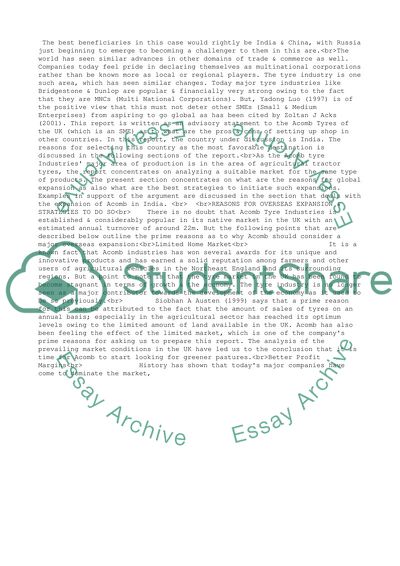Cite this document
(“Report on the feasibility of the overseas expansion of acomb tyres in Essay”, n.d.)
Report on the feasibility of the overseas expansion of acomb tyres in Essay. Retrieved from https://studentshare.org/business/1527758-report-on-the-feasibility-of-the-overseas-expansion-of-acomb-tyres-in-india
Report on the feasibility of the overseas expansion of acomb tyres in Essay. Retrieved from https://studentshare.org/business/1527758-report-on-the-feasibility-of-the-overseas-expansion-of-acomb-tyres-in-india
(Report on the Feasibility of the Overseas Expansion of Acomb Tyres in Essay)
Report on the Feasibility of the Overseas Expansion of Acomb Tyres in Essay. https://studentshare.org/business/1527758-report-on-the-feasibility-of-the-overseas-expansion-of-acomb-tyres-in-india.
Report on the Feasibility of the Overseas Expansion of Acomb Tyres in Essay. https://studentshare.org/business/1527758-report-on-the-feasibility-of-the-overseas-expansion-of-acomb-tyres-in-india.
“Report on the Feasibility of the Overseas Expansion of Acomb Tyres in Essay”, n.d. https://studentshare.org/business/1527758-report-on-the-feasibility-of-the-overseas-expansion-of-acomb-tyres-in-india.


